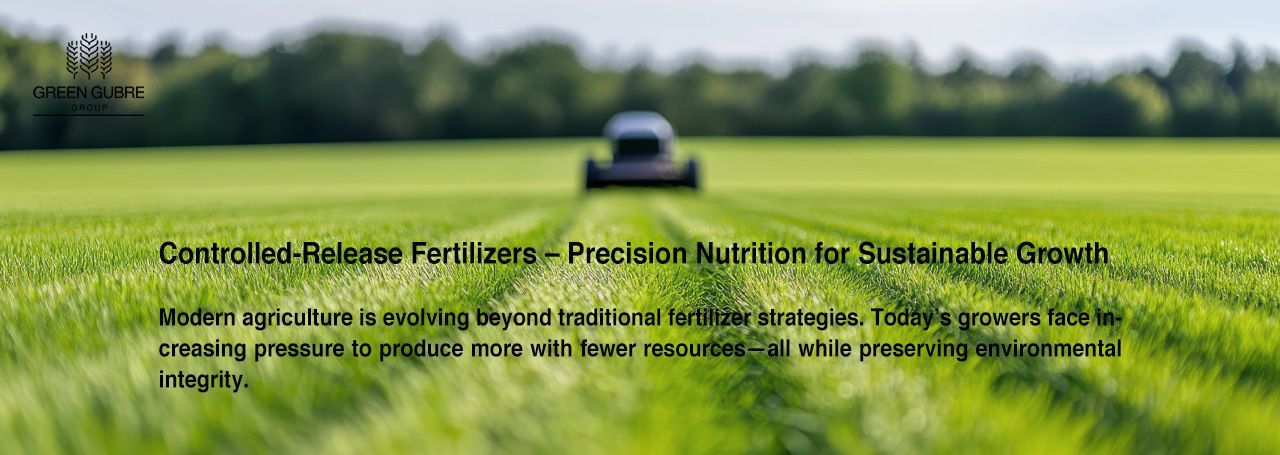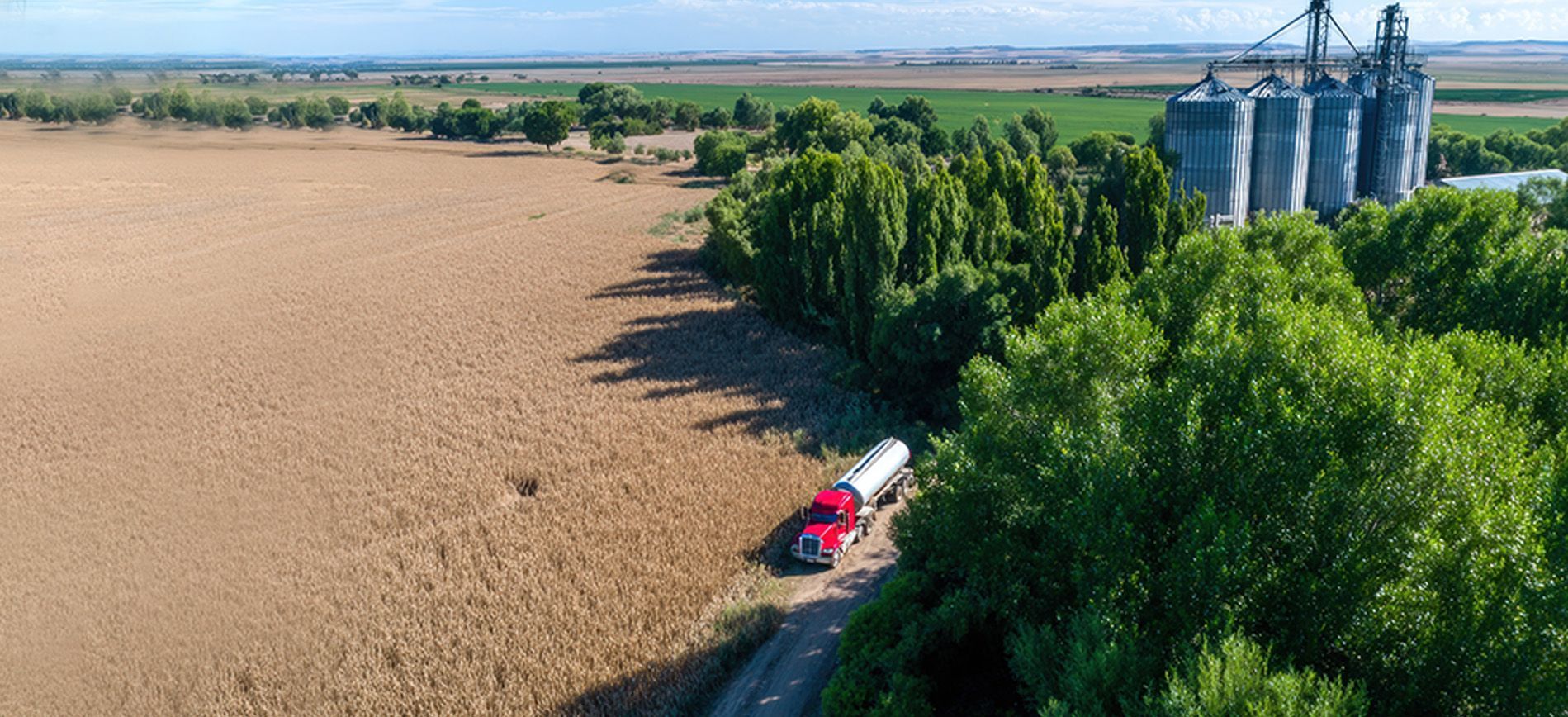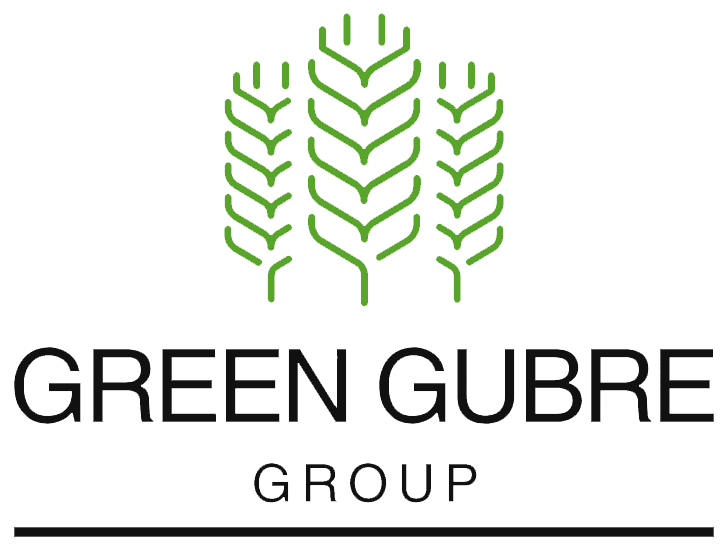Controlled-Release Fertilizers – Precision Nutrition for Sustainable Growth
Controlled-Release Fertilizers – Precision Nutrition for Sustainable Growth

Introduction: Feeding Crops with Precision
Modern agriculture is evolving beyond traditional fertilizer strategies. Today’s growers face increasing pressure to produce more with fewer resources—all while preserving environmental integrity. Controlled-Release Fertilizers (CRFs) offer a robust solution by delivering nutrients gradually, aligning with plant needs over time. Unlike conventional fertilizers, which release nutrients immediately, CRFs are designed to synchronize nutrient availability with crop uptake, reducing losses and maximizing efficiency.
In an era of climate uncertainty, soil degradation, and rising input costs, CRFs play a critical role in achieving precision agriculture and long-term sustainability.
How Controlled-Release Fertilizers Work
Controlled-release fertilizers are coated or encapsulated materials that regulate nutrient release through physical barriers and environmental conditions. The coatings—often made from polymers, sulfur, or resins—control how quickly water penetrates and dissolves the nutrients inside.
Mechanism of Action:
- Water-Driven Release: Moisture diffuses through the coating, allowing it to release.
- Temperature Sensitivity: Higher temperatures increase the release rates of nutrients.
- Plant Demand Matching: Nutrients are available when the crop needs them most.
CRFs provide a sustained supply of macronutrients, such as nitrogen, phosphorus, and potassium, over weeks or even months, thereby reducing the need for multiple applications.
Key Agronomic Benefits
- Improved Nutrient Use Efficiency (NUE):
CRFs can improve NUE by up to 40%, enabling farmers to obtain more value per kilogram of nutrient applied.
- Yield Increases:
Crops such as rice, corn, and potatoes exhibit yield gains of 10–25% under CRF regimes, particularly in challenging soil or climate conditions.
- Reduced Nutrient Losses:
CRFs significantly cut nitrogen leaching and ammonia volatilization, minimizing both economic and environmental losses.
- Labor & Cost Savings:
With fewer applications needed, CRFs reduce labor, fuel, and equipment use—crucial for large-scale farms or areas with limited labor availability.
- Better Root Development:
Consistent nutrient availability supports stronger, deeper root systems, enhancing drought resilience and crop quality.
Environmental Advantages
- Lower Groundwater Contamination Risk:
CRFs decrease nitrate leaching, protecting groundwater from contamination.
- Reduced Greenhouse Gas Emissions:
Slower nitrogen release reduces nitrous oxide (N₂O) emissions, a major agricultural greenhouse gas.
- Compliance with Regulations:
Many regions are implementing strict nitrogen use limits—CRFs help meet those thresholds without sacrificing yields.
These benefits make CRFs ideal tools in climate-smart agriculture and carbon-conscious farming strategies.
Types of CRF Coatings
| Type | Material | Typical Longevity |
|---|---|---|
| 1Polymer-coated urea | Synthetic polymers | 60–120 days |
| Sulfur-coated urea | BiSulfur + wax coatingll | 30–60 days |
| Resin-coated fertilizers | Resin compounds | 90–180 days |
The choice of coating affects the release pattern, making it essential to match CRF type to the crop cycle and local climate.
Global Market Trends and Forecast
The global Controlled-Release Fertilizer market was valued at approximately USD 3.4 billion in 2024 and is projected to reach USD 6.1 billion by 2030. Key growth drivers include:
- Precision farming adoption across North America and Europe
- High-value horticulture and greenhouse crops in Asia-Pacific
- Environmental regulations driving CRF mandates in Brazil and the EU
Countries like India, China, Germany, and Canada are investing in CRF subsidies and R&D to promote adoption.
Green Gubre Group’s CRF Portfolio
At Green Gubre Group, we offer a wide range of CRF solutions designed for:
- Field crops (e.g., cereals, oilseeds)
- Horticulture (vegetables, fruits, greenhouse)
- Plantation systems (palm oil, tea, coffee)
Our products include:
- Polymer-coated urea with DMPP inhibitors
- Custom CRF blends for fertigation systems
- Slow- and controlled-release hybrids for extended growing seasons
We also offer custom blending, soil analysis integration, and logistics coordination, ensuring that clients receive the right solution at the right time.
Conclusion: A Smarter Future with CRFs
Controlled-Release Fertilizers are no longer niche products—they are strategic tools for global food security. By aligning nutrient release with plant demand, they improve yield, lower environmental impact, and support regulatory compliance. Whether you’re a commercial grower or government buyer, CRFs provide a pathway to more brilliant, more sustainable nutrition.




